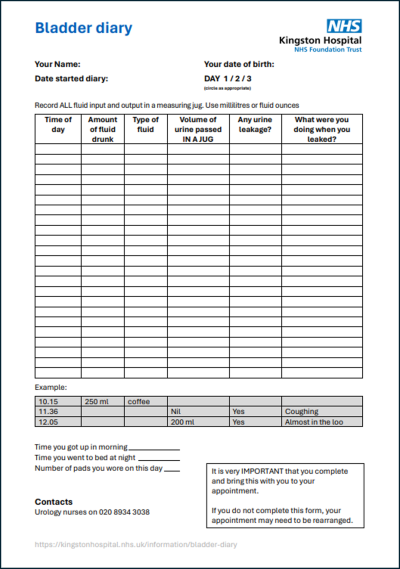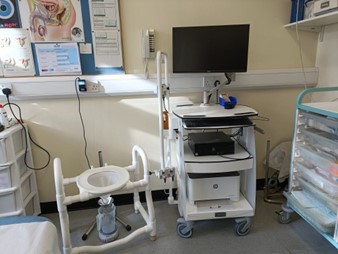Neurodiversity information for parents and young people
About a cystometrogram
A cystometrogram is a test to help us understand how well your bladder is functioning. It is used to measure how much urine the bladder can hold and how full it is when you have the urge to go.
It involves filling the bladder through a catheter and measuring the pressures in the bladder.
Alternatives to cystometrogram
If you do not want to have this procedure, we will have to rely on your own description of your symptoms.
Side effects
Common: Mild burning when you pass urine for a short period afterwards.
Occasional: Urinary infection, requiring treatment with antibiotics.
Rare: Inability to pass urine afterwards. This might require a temporary catheter (small hollow tube used to drain your urine), or learning how to insert a catheter yourself. This is likely to only last about 1 week.
Before the procedure

Pregnant women should not have a cystometrogram.
If there is a possibility you could be pregnant, contact the Urology department before your appointment.

If you do not complete the diary, your test will need to be rescheduled.
- Try to drink 2 pints of water (or dilute, non-caffeinated liquid such as squash) an hour before your appointment.
This is so that you have a comfortably full bladder when you arrive. Your bladder does not need to be so full that you are in danger of having an accident.
- If you cannot hold your urine for this long, come to the department an hour early. Then drink once you are here. There is a water fountain. This is to try and keep your bladder as full as possible.
- You may eat and drink as normal before the procedure.
During the procedure
- The procedure is done in an outpatient clinic.
- Allow 1.5 hours for the appointment.
- Firstly, we will ask you to empty your bladder into a flowmeter (shown in the photo below). This is a special toilet that records the rate and amount of urine. It helps us to measure how well your bladder is working.
- A specially trained health practitioner will then insert a catheter (small hollow tube) into your urethra (water pipe) and also your rectum (back passage).
- An anaesthetic is not usually needed. But we will insert a small amount of lubricating gel to ease any mild discomfort.
- Your bladder will be filled with sterile water via a pump. The catheters are connected to a computer which receives information as your bladder fills.
- As your bladder fills, we will ask you to cough so that we can assess any leakage.
- When your bladder is full, we will ask you to pass urine into the flowmeter again.
- We will then scan your bladder to check if it is empty.


After the procedure
Once the procedure is complete, you may leave the hospital and return to your normal activities straight away.
During the 24 hours after the test, try to drink 2 to 3 litres of water or non-alcoholic fluids. This is to reduce the risk of a urine infection.
Within a few weeks of the procedure, we will send you an appointment to discuss your results with a doctor.
What to look out for
![]()
![]()
Contact information
Urodynamics Team (Monday to Thursday, 8am to 5pm; Friday 8am to noon)
020 8934 3038
Clinical nurse specialist in Urology Oncology
020 8934 2729